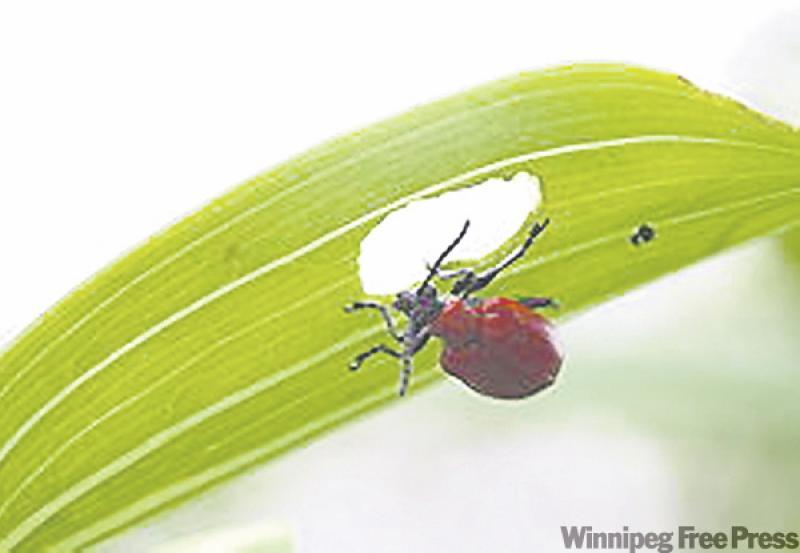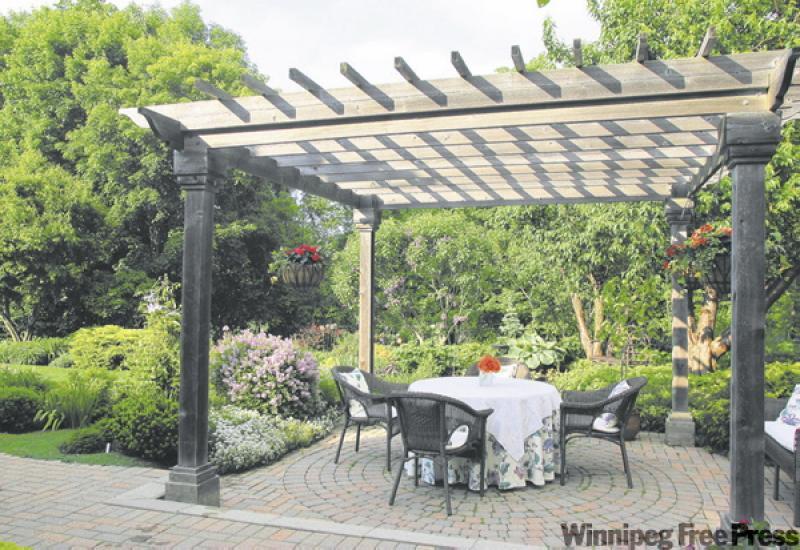


QUESTION: I always read your column on Sundays. Maybe you can help me. I have violet irises all over my front/back yard in various locations -- sun and sun/shade. This year I've got a lot of nice dark green leaves but not even one flower. Did I do something wrong? My irises are few years old -- is it time to get rid of them? Please advise.
-- Maria
ANSWER: Over time mature iris clumps will stop producing blooms in the centre unless they are divided every three to four years and the old non-performing rhizomes discarded. Lift the entire clump without damaging any roots. Washing the soil off with a hose may help with the next step. Carefully separate the older inner rhizomes from the smaller younger rhizomes by snapping them off or making a sharp cut. Apply sulphur powder to the cut or dip in a 10% bleach/water solution. You can take this opportunity to improve the soil before re-planting your iris. Be sure to not plant the rhizomes too deeply.
QUESTION: I was wondering if you could help me in finding out what is affecting my lilies. The damage to the lilies appears to be more prevalent in one garden area than in other areas around the yard. The lilies come up quite nicely and have many blossoms. There are pieces missing from the leaves and it looks like something bores into the buds before they bloom. Ultimately, the buds do not bloom or if they do, they look ravaged. The lilies are damaged, yet I never see any insects of any kind on them. I have even tried going out at night and I cannot see anything that is on or in the lilies.
I would appreciate if you have any insight into this problem.
Thank you very much.
-- Ken
ANSWER: Although I've written about lily leaf beetle in the past, I checked the Manitoba Regional Lily Society website for any new information.
The lily leaf beetle (Lilioceris lilli), native to Europe, was discovered near Montreal in 1945. It has since spread westward. The beetles have been reported 60 km east and west of Portage la Prairie and in eastern Winnipeg from North Kildonan to St.Vital. They also feed on some varieties of fritillaria and Solomon's seal. Often, they consume all the leaves leaving only bare stems. The most severe damage usually occurs from June into August.
The lily beetle has no known natural enemies in Canada. It is up to each gardener to check their lily plantings weekly for signs of the beetle, larvae or eggs. The beetles are strong fliers and can move around the neighborhood. Inform and enlist your neighbors to help control this pest.
Here are some facts:
Over wintering adult beetles emerge in early spring from the surrounding soil to mate and lay 200 to 400 eggs on the underside of the leaves of the lily plant. The eggs usually hatch in about seven to 10 days.
Emerging larvae will begin feeding on the underside of the leaves and then move to the top. This stage lasts for about 16-24 days. They will cover themselves with their own feces to discourage predators.
Larvae drop to the ground and pupate for about 20-25 days. Pupae cases are dark brown or black in color and difficult to spot in the soil.
Emerging adults climb plants and feed until fall but do not normally mate or lay eggs until the following spring.
Adults over winter in the surrounding soil or under plant debris. Some adults may survive over two seasons.
Here are some controls suggested by MRLS throughout the life cycle:
Stir up the surrounding soil or the mulch in early spring and kill any emerging beetles before they have a chance to lay their eggs.
Handpick the adult beetles (6-8 mm º inch in length) as soon as they appear on the emerging lilies.
General-purpose insecticides labeled for leaf beetle and perennial/ornamental use, should give control. Dust with Rotenone powder. (Remains effective for 2-3 days). Spray the adults with Sevin, Malathion, Neem oil or try Safer's End-All as an alternative every 5 to 7 days throughout the season.
Destroy the egg cases on the underside of the leaves. The yellow/orange eggs are quite small, approximately one mm, laid in clusters or in irregular rows.
Hand-pick and remove the larvae (this can be messy so use rubber gloves) or apply the chosen insecticide by spraying or dusting the larvae and the underside of the leaves.
In the fall stir up the soil and apply Rotenone dust or diatomaceous earth. An organic alternative is to apply coffee grounds around the base of the plants.
QUESTION: I read you column this morning on the beautiful gardens you toured in the Natural Garden Tour. I was intrigued with the photo of the granite boulder that became a scultpural. Did someone make this?
We have been eliminating grass in our back yard, and I am looking for a feature (not necessarily a water feature) to add. I was thinking of simply a 6 ft. diameter round brick patio, but after I saw the photo of the granite boulder I thought I should be more creative. Any thoughts or suggestions on where I could look for ideas?
-- Linda
ANSWER: The granite boulder water feature was part of a patio and path project that took the homeowners three years to complete. Browsing in the gardening section of a bookstore or library is the best place to begin to gather ideas and explore options. There are also specialty magazines with backyard projects of all types, tastes and budgets. Hardscaping often requires a substantial investment of effort and money. You want to make sure you make the right choice based on your wants and needs.
linda.stilkowski@freepress.mb.ca




